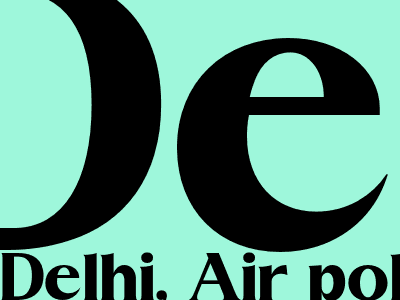
Air Pollution in Delhi: A Crisis Unfolding
Introduction
Delhi, the capital of India, is grappling with a severe air pollution crisis that has persisted for years. The city's air quality has deteriorated to alarming levels, posing significant health risks to its residents and raising concerns about the long-term sustainability of the city.
Causes of Air Pollution in Delhi
Vehicular Emissions
Delhi has one of the highest densities of vehicles in the world. The majority of these vehicles run on fossil fuels, releasing harmful pollutants such as nitrogen oxides, particulate matter, and carbon monoxide into the air.
Construction Activities
Delhi is undergoing rapid construction, which generates大量的灰尘和颗粒物,进一步恶化空气质量。
Industrial Emissions
Delhi has several industrial areas that release toxic chemicals and pollutants into the atmosphere. These emissions contribute to the formation of smog and ground-level ozone.
Burning of Crop Residues
During the winter months, farmers in neighboring states burn agricultural residues, which releases large amounts of smoke and particulate matter into the air. These pollutants are carried by wind to Delhi, exacerbating the air pollution situation.
Health Impacts of Air Pollution in Delhi
Respiratory Problems
Exposure to air pollution can cause and aggravate respiratory problems such as asthma, bronchitis, and pneumonia. Long-term exposure to certain pollutants, such as particulate matter, has been linked to lung cancer.
Cardiovascular Disease
Air pollution has also been associated with an increased risk of cardiovascular diseases, including heart attacks and strokes. Pollutants such as nitrogen oxides and particulate matter can damage the heart and blood vessels.
Other Health Concerns
Air pollution can also contribute to eye irritation, skin problems, and even mental health issues such as depression and anxiety.
Government Responses to Air Pollution in Delhi
The Delhi government has implemented several measures to address the air pollution crisis, including:
Odd-Even Scheme
The government has introduced an odd-even scheme that restricts the use of private vehicles based on their license plate numbers. This aims to reduce traffic congestion and vehicular emissions.
Electric Vehicle Promotion
The government is promoting the adoption of electric vehicles through subsidies and incentives. This is intended to reduce reliance on fossil fuels and curb vehicular emissions.
Air Quality Monitoring
The government has installed air quality monitors throughout the city to track pollution levels and provide real-time updates to the public.
Long-Term Solutions for Air Pollution in Delhi
Shift to Renewable Energy
Delhi needs to transition to清洁能源来源,例如太阳能和风能,以减少依赖化石燃料并降低空气污染。
Public Transportation Improvements
Investing in and improving public transportation can reduce the need for private vehicles and mitigate traffic congestion, thereby reducing vehicular emissions.
Green Building Practices
Encouraging the adoption of green building practices can reduce energy consumption and emissions from buildings.
Education and Awareness
Public education and awareness campaigns are crucial to inform residents about the dangers of air pollution and encourage behavioral changes that reduce emissions.
Conclusion
The air pollution crisis in Delhi is a complex and urgent issue that requires immediate and long-term solutions. While the government has taken some steps to address the problem, much more needs to be done. By implementing comprehensive and sustainable measures, Delhi can work towards improving its air quality and ensuring the health and well-being of its residents.